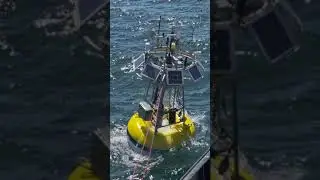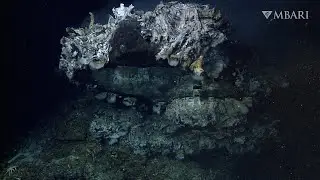We're listening in on Earth’s largest animal 🐋
With the blue whale’s massive size comes a massive appetite. But isn’t always easy finding their primary food source—krill—in the vast and dynamic waters of the ocean. How do these gentle giants find food and survive?
The Blue Whale Observatory is a network of acoustic instruments in Monterey Bay that aims to answer this question. The observatory records whale calls, krill swarm activity, and ocean conditions for four months straight every summer and fall. These detailed recordings reveal more about the predator, prey, and environmental dynamics that drive blue whales’ behavior.
Findings from the Blue Whale Observatory can inform efforts to protect these endangered mammals. They also open up possibilities for studying other marine species in a similar way. Learning more about the dynamics of ocean life—from the tiniest krill to the largest whale—can help us become better stewards of our blue planet.
Learn more: • Eavesdropping on ocean giants: MBARI ...































